Table of Contents
- Understanding Dietary Restrictions
- Gluten-Free Diet
- Allergen-Friendly Diet
- Gluten-Free Grains
- Gluten-Free Flours
- Gluten-Free Pasta
- Gluten-Free Baking Mixes
- Gluten-Free Snacks
- Allergen-Free Milk Alternatives
- Nut Butter Alternatives
- Egg Replacements
- Soy-Free Protein Sources
- Allergen-Friendly Snacks
- Navigating the World of Allergen-Friendly and Gluten-Free Foods
Dietary restrictions due to allergies, intolerances or lifestyle choices no longer mean sacrificing flavor, variety or nutrition. With the increasing demand for allergen-friendly and gluten-free options, the food industry has responded by offering a diverse array of products and ingredients that cater to a wide range of dietary needs. In this article, we will explore the essentials for those with dietary restrictions, highlighting the options available for a fulfilling and delicious culinary experience.
The landscape of dietary choices has evolved and dietary restrictions need not equate to bland or limited options. Whether driven by allergies, intolerances or lifestyle preferences, individuals no longer have to sacrifice flavor, variety or nutrition. The growing demand for allergen-friendly and gluten-free alternatives has spurred a remarkable transformation in the food industry.
In response to this demand, food manufacturers and creators have innovated, offering an expansive range of products and ingredients tailored to diverse dietary needs. From dairy alternatives to gluten-free flours, plant-based proteins to low-sugar options, the variety is impressive. This article endeavors to navigate this extensive landscape, providing insights into essential foods for those with dietary restrictions. We’ll uncover the vibrant array of options available, ensuring a delightful and nutritious culinary journey for all. Embrace your dietary choices without compromise and relish a truly satisfying and flavorsome dining experience.
Additionally, you can find further information on this topic by visiting this page: Dietary Restrictions and Food Allergies
Understanding Dietary Restrictions
Dietary restrictions can stem from various reasons, including food allergies, intolerances, autoimmune conditions or personal preferences. Two common dietary restrictions are gluten-free and allergen-friendly diets.
The world of dietary choices and restrictions is as diverse as the people who make them and it’s often influenced by a multitude of factors ranging from medical necessities to individual preferences. Among the various dietary restrictions that individuals may embrace, two that stand out are gluten-free and allergen-friendly diets, each with its unique set of considerations and benefits.
Gluten-Free Diet:
- Celiac Disease: A primary driver of gluten-free diets is celiac disease, an autoimmune condition in which the consumption of gluten—a protein found in wheat, barley and rye—triggers an immune response that damages the small intestine. For individuals with celiac disease, strict adherence to a gluten-free diet is imperative to prevent symptoms and complications.
- Non-Celiac Gluten Sensitivity: Some people experience digestive discomfort and other symptoms when consuming gluten-containing foods, even without celiac disease. This condition, known as non-celiac gluten sensitivity, also prompts individuals to adopt a gluten-free diet to alleviate symptoms.
- Health and Well-Being: Beyond medical necessity, some individuals opt for gluten-free diets as a lifestyle choice, believing it contributes to better digestion or overall well-being.
Allergen-Friendly Diet:
- Food Allergies: Allergen-friendly diets cater to individuals with food allergies, which can range from common allergens like peanuts, tree nuts, shellfish, dairy and eggs to less common ones. Avoiding allergenic foods is essential to prevent severe allergic reactions, which can be life-threatening.
- Intolerances: In addition to allergies, some people have food intolerances, such as lactose intolerance or fructose malabsorption, which require them to avoid specific foods or types of sugars to prevent digestive discomfort.
- Precautionary Measures: In some cases, allergen-friendly diets extend beyond personal allergies to create safe environments for individuals with severe allergies who may be at risk even from trace amounts of allergenic foods.
Both gluten-free and allergen-friendly diets share common threads of necessity, health considerations and the importance of reading labels and ingredient lists carefully. They also often require individuals to explore alternative ingredients and cooking methods to ensure they still enjoy a diverse and satisfying diet.
In navigating these dietary restrictions, individuals find not only challenges but also opportunities for creativity and discovery. A gluten-free diet, for example, might lead to the exploration of naturally gluten-free grains like quinoa and amaranth or the development of gluten-free baking recipes that rival their traditional counterparts. Similarly, allergen-friendly diets can inspire culinary innovations, such as finding new ways to make nut-free pesto or dairy-free ice cream.
Ultimately, dietary restrictions are a testament to the adaptability and resilience of individuals in the face of unique dietary challenges. They offer an opportunity to foster a deeper understanding of one’s body, explore new culinary horizons and promote empathy and inclusion for those with dietary restrictions in a world where food plays a central role in our social and cultural experiences.
Should you desire more in-depth information, it’s available for your perusal on this page: Gluten-free diet – Mayo Clinic
Gluten-Free Diet
Gluten is a protein found in wheat, barley, rye and their derivatives. People with celiac disease or non-celiac gluten sensitivity must avoid gluten to prevent adverse health effects. A gluten-free diet can also be a choice for those seeking to reduce inflammation or digestive discomfort.
Understanding gluten and its impact on health is crucial for making informed dietary choices. Gluten, a protein present in wheat, barley, rye and their derivatives, can have varying effects on individuals, making it important to distinguish between different dietary needs:
Celiac Disease and Gluten Sensitivity: For individuals with celiac disease or non-celiac gluten sensitivity, gluten can trigger adverse health effects. In celiac disease, gluten consumption can lead to damage in the small intestine, impair nutrient absorption and result in various symptoms, including gastrointestinal distress, fatigue and skin issues. Non-celiac gluten sensitivity may manifest with similar symptoms but lacks the autoimmune response seen in celiac disease. Both conditions require strict avoidance of gluten to maintain health and well-being.
Inflammation and Digestive Comfort: Some individuals, even without diagnosed gluten-related conditions, may choose to adopt a gluten-free diet to address concerns like inflammation or digestive discomfort. In such cases, eliminating gluten-containing foods may help alleviate symptoms and promote overall well-being.
Gluten-Free Choices: For those following a gluten-free diet, it’s essential to embrace a wide variety of naturally gluten-free foods. These include fruits, vegetables, lean proteins, legumes and gluten-free grains like rice and quinoa. A well-planned gluten-free diet can be nutritious and balanced.
Nutritional Considerations: While it’s entirely possible to maintain a healthy and balanced gluten-free diet, it’s important to be mindful of potential nutritional gaps. Some gluten-free processed foods can be low in fiber and essential nutrients. Therefore, it’s advisable to focus on whole, unprocessed foods and consult with a healthcare provider or dietitian to ensure adequate nutrient intake.
Individual Variation: It’s crucial to recognize that the impact of gluten on health varies from person to person. What works for one individual may not apply to another. Personalized dietary choices should take into account individual health conditions, preferences and sensitivities.
In summary, gluten is a protein that can have diverse effects on health. For those with celiac disease or non-celiac gluten sensitivity, strict gluten avoidance is essential. Others may choose a gluten-free diet for reasons related to inflammation or digestive comfort. Regardless of the choice, it’s important to make informed dietary decisions and ensure that the diet remains balanced and nutritionally sound. Consulting with a healthcare provider or dietitian can provide valuable guidance on navigating a gluten-free lifestyle effectively.
If you’d like to dive deeper into this subject, there’s more to discover on this page: Dine On Campus at Colgate University || Dietary Restrictions
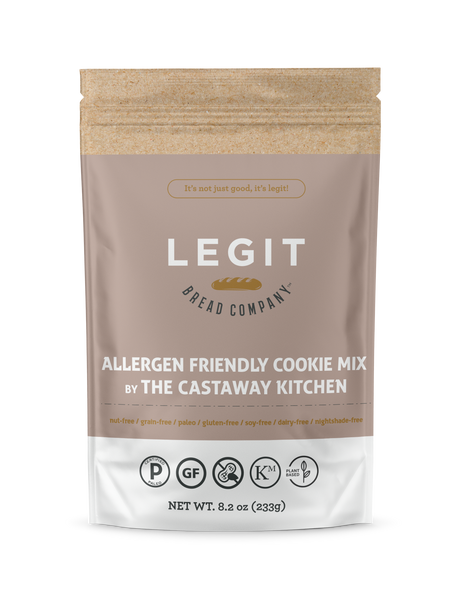
Allergen-Friendly Diet
Food allergies to common allergens like nuts, dairy, soy, eggs and shellfish can be life-threatening. An allergen-friendly diet involves avoiding specific allergenic ingredients to prevent allergic reactions.
Living with food allergies can be a daily challenge, as common allergens like nuts, dairy, soy, eggs and shellfish have the potential to trigger severe, life-threatening reactions. An allergen-friendly diet becomes not just a choice but a necessity, a lifeline that ensures safety and well-being for those with allergies.
Hyper-Vigilance as a Way of Life: For individuals with food allergies, hyper-vigilance becomes a way of life. Every meal, every snack and every bite requires meticulous scrutiny of ingredients and preparation methods. This heightened awareness is not born out of paranoia but out of necessity, as even a trace amount of an allergen can have devastating consequences.
The Art of Avoidance: An allergen-friendly diet is, at its core, an exercise in avoidance. It involves steering clear of specific allergenic ingredients in their various forms, from whole foods to hidden components in processed products. This can mean reading food labels with eagle-eyed precision, communicating dietary restrictions to restaurant staff and even educating friends and family on the seriousness of the allergy.
Navigating Social Situations: Food allergies extend beyond the realm of personal choices; they influence social interactions and gatherings. Individuals with allergies often find themselves in situations where they need to assert their dietary requirements and advocate for their safety. Friends, family members and coworkers also play a crucial role by being understanding and accommodating.
The Importance of Preparedness: Being prepared for allergic reactions is an integral part of managing food allergies. Many individuals carry epinephrine auto-injectors, which can be life-saving in the event of an accidental exposure. Proper training and knowing how to use these devices are essential.
Support and Advocacy: Living with food allergies can be isolating, but support networks and advocacy groups provide a sense of community and resources for those affected. These organizations offer not only emotional support but also valuable information on allergen-friendly products, safe dining options and the latest research.
While living with food allergies presents significant challenges, it also fosters resilience and resourcefulness. Individuals with allergies become experts in their own health, navigating a world filled with potential hazards. An allergen-friendly diet is not just about what’s on the plate; it’s about safeguarding life itself. It’s a journey that calls for unwavering commitment, vigilance and the unwavering determination to enjoy life to the fullest while staying safe.
To expand your knowledge on this subject, make sure to read on at this location: Dietary Restrictions and Food Allergies
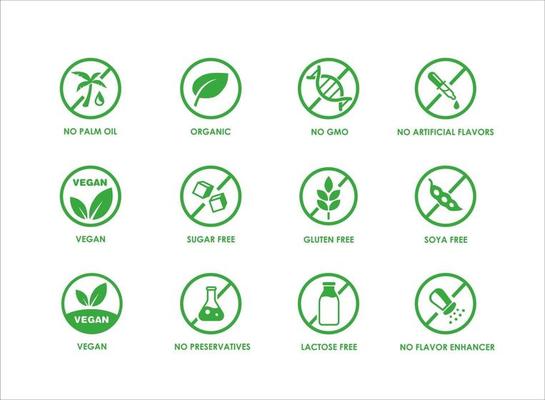
Gluten-Free Grains
Opt for naturally gluten-free grains like rice, quinoa, millet and corn as staples in your diet. These grains serve as versatile substitutes for gluten-containing grains like wheat.
Certainly, here’s an extended idea:
“Opting for naturally gluten-free grains like rice, quinoa, millet and corn as staples in your diet is not only a smart choice for those with gluten sensitivities or celiac disease but also a fantastic way to diversify your meals and enhance your overall nutritional intake. These gluten-free grains offer a wealth of benefits and serve as versatile substitutes for gluten-containing grains like wheat.
1. Gluten-Free Goodness:
- Naturally gluten-free grains are inherently safe for individuals who need to avoid gluten, such as those with celiac disease or non-celiac gluten sensitivity. These grains provide a delicious way to enjoy grains without the digestive discomfort or health issues associated with gluten consumption.
2. Rich in Nutrients:
- Gluten-free grains are packed with essential nutrients. For instance, brown rice is an excellent source of complex carbohydrates, while quinoa boasts a complete protein profile, making it a valuable addition to vegetarian and vegan diets.
- Millet offers a host of vitamins and minerals, including magnesium and phosphorus, essential for bone health and muscle function.
- Corn, often underestimated, provides fiber and various antioxidants, including carotenoids, which support eye health.
3. Versatility in the Kitchen:
- These grains are incredibly versatile in the kitchen, suitable for a wide range of culinary styles and dishes. Rice can serve as a base for stir-fries, quinoa can replace couscous in salads, millet can be used to make a comforting porridge and corn can be transformed into tortillas or a delightful side dish.
- By incorporating gluten-free grains, you can explore a world of flavors and textures, making your meals exciting and diverse.
4. Supporting Digestive Health:
- For those with gluten intolerance or digestive sensitivities, transitioning to gluten-free grains can lead to improved digestive health. This change can alleviate symptoms like bloating, abdominal discomfort and irregular bowel movements.
5. Whole Grain Options:
- Many naturally gluten-free grains are available in whole grain forms, providing greater fiber content and a lower glycemic index. This makes them ideal choices for individuals looking to manage blood sugar levels and maintain steady energy throughout the day.
6. Gluten-Free Diet as a Lifestyle Choice:
- Even for individuals without gluten sensitivities, incorporating naturally gluten-free grains into their diet can be a conscious lifestyle choice. It offers an opportunity to diversify one’s nutrient intake and explore the culinary world while reducing reliance on gluten-containing grains.
In summary, opting for naturally gluten-free grains like rice, quinoa, millet and corn is a win-win strategy. It not only accommodates the dietary needs of those with gluten sensitivities but also introduces a wealth of nutrients, flavors and versatility to your meals. By embracing these gluten-free grains, you can make informed, health-conscious choices that benefit your well-being and culinary enjoyment.”
To expand your knowledge on this subject, make sure to read on at this location: Dine On Campus at Colgate University || Dietary Restrictions
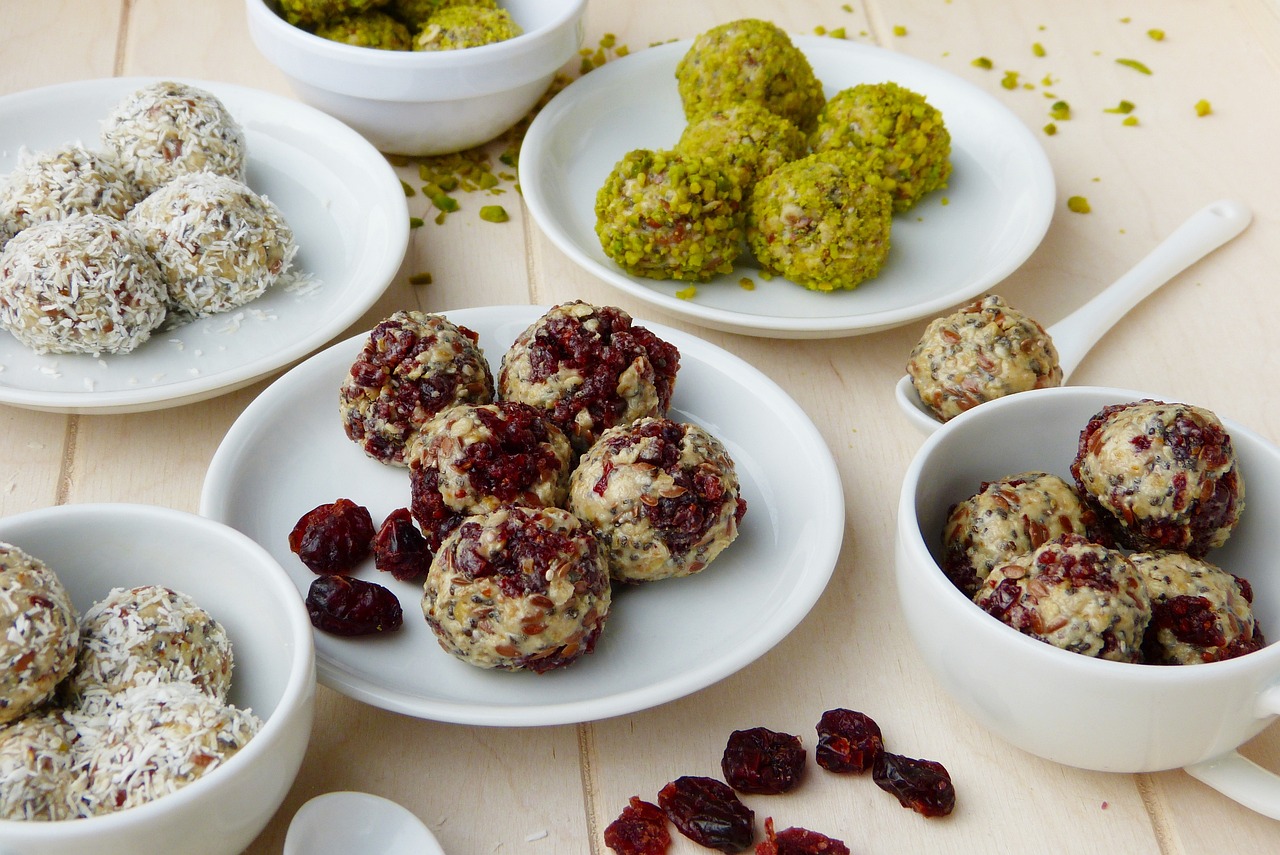
Gluten-Free Flours
Flour alternatives such as almond flour, coconut flour and rice flour can be used for baking and cooking, allowing you to enjoy your favorite recipes without gluten.
Exploring flour alternatives is not only a creative culinary adventure but also a practical solution for those looking to avoid gluten. Almond flour, coconut flour and rice flour are versatile options that can open up a world of gluten-free possibilities while preserving the flavors and textures you love in your favorite recipes.
Almond flour is a nutrient-rich choice that adds a subtle nutty flavor to your baked goods. It’s a great source of healthy fats, protein and fiber, making it a wholesome option for gluten-free baking. Almond flour lends a delightful moisture and tenderness to your cakes, muffins and cookies, allowing you to enjoy the same delightful treats without the use of traditional wheat flour.
Coconut flour, derived from dried coconut meat, is a fantastic gluten-free option with a mild coconut flavor. It’s high in fiber, which can help promote a feeling of fullness and aid in digestion. Coconut flour is excellent for thickening sauces, creating fluffy pancakes or crafting delectable desserts like coconut macaroons. It’s a unique choice that adds a tropical twist to your dishes.
Rice flour is a classic gluten-free alternative that provides a neutral flavor profile. It’s finely milled from rice grains, offering a light and airy texture to your baked goods. Rice flour is often used in recipes for gluten-free bread, muffins and pancakes, providing a delightful crumb structure and a satisfying taste.
These flour alternatives not only cater to those with gluten sensitivities or allergies but also add a nutritional boost to your creations. They’re naturally gluten-free and packed with essential nutrients that can enhance your overall diet.
When using flour alternatives, keep in mind that they absorb moisture differently than traditional wheat flour. Adjusting the liquid content in your recipes may be necessary to achieve the desired consistency. Experimenting with these flours can lead to delightful surprises and unique culinary experiences, allowing you to savor your favorite dishes while accommodating dietary preferences and restrictions.
So, whether you’re crafting gluten-free pastries with almond flour, whipping up coconut flour pancakes for breakfast or perfecting your rice flour-based bread recipe, these flour alternatives empower you to enjoy a world of flavors and textures without the limitations of gluten. It’s a delicious journey of culinary exploration that welcomes everyone to the table, regardless of dietary needs.
If you’d like to dive deeper into this subject, there’s more to discover on this page: Is Chicken Broth Gluten Free? 6 Chicken Broth Brands
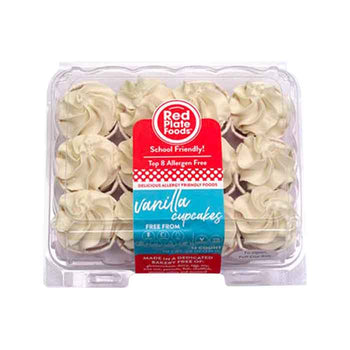
Gluten-Free Pasta
Explore gluten-free pasta options made from rice, corn or legume-based flours, which mimic the taste and texture of traditional pasta.
Explore gluten-free pasta options made from rice, corn or legume-based flours, which mimic the taste and texture of traditional pasta while offering a range of benefits that cater to various dietary preferences and requirements:
Gluten-Free Goodness: For individuals with gluten sensitivities or celiac disease, gluten-free pasta provides a safe and delicious alternative. It allows them to enjoy pasta dishes without the digestive discomfort or health issues associated with gluten consumption.
Diverse Flavors: Gluten-free pasta comes in a variety of flavors, thanks to the different flours used. While rice pasta offers a neutral taste that pairs well with various sauces, corn pasta brings a slightly sweet and nutty flavor to the table. Legume-based pastas, such as chickpea or lentil, provide a subtle earthiness and added protein.
Nutrient Density: Legume-based gluten-free pastas, in particular, are nutrient powerhouses. They are rich in protein and dietary fiber, contributing to feelings of fullness and satiety. Additionally, they contain essential vitamins and minerals, making them an excellent choice for those looking to boost their nutrient intake.
Texture and Versatility: Modern gluten-free pasta options are carefully crafted to closely resemble the texture and mouthfeel of traditional wheat pasta. Whether you prefer al dente or a softer texture, you can find gluten-free pasta that suits your taste. Their versatility allows you to create a wide range of pasta dishes, from classic spaghetti to creative stir-fries and salads.
Plant-Based Protein: Legume-based gluten-free pastas are particularly appealing for vegetarians and vegans, as they offer a significant source of plant-based protein. This can be especially beneficial for those striving to meet their protein needs through a meat-free diet.
Allergen-Friendly: Gluten-free pasta is naturally free of wheat, making it an allergen-friendly option for those with wheat allergies. It also helps accommodate various dietary preferences, such as vegetarian, vegan and plant-based diets.
Wider Accessibility: Gluten-free pasta is now widely available in most grocery stores and comes in numerous shapes and sizes, allowing you to enjoy your favorite pasta dishes without sacrificing taste or texture.
When exploring gluten-free pasta options, it’s essential to read labels carefully to ensure they meet your dietary needs and preferences. Whether you’re following a gluten-free diet due to medical necessity or simply looking to diversify your culinary experiences, the world of gluten-free pasta offers a spectrum of choices that cater to a variety of tastes and dietary requirements, making mealtime both satisfying and enjoyable.
You can also read more about this here: Nutrition & Allergen Information | Yard House Restaurant

Gluten-Free Baking Mixes
Many gluten-free baking mixes are available, allowing you to create delicious baked goods like muffins, pancakes and bread with ease.
The availability of gluten-free baking mixes has been a game-changer for individuals with gluten sensitivities or those who follow a gluten-free diet. These mixes open up a world of culinary possibilities, making it not only convenient but also enjoyable to create a wide range of delectable baked goods. Here’s why gluten-free baking mixes are a valuable addition to your kitchen:
Gluten Sensitivity and Celiac-Friendly: For those with gluten sensitivity or celiac disease, consuming gluten can lead to uncomfortable digestive symptoms or even damage to the intestinal lining. Gluten-free baking mixes provide a safe and delicious way to enjoy baked goods without the worry of adverse reactions.
Convenience and Time-Saving: Gluten-free baking can be more challenging and time-consuming due to the unique properties of gluten-free flours. Baking mixes simplify the process, as they often contain a blend of gluten-free flours and the necessary leavening agents. This streamlines preparation and reduces the risk of baking mishaps.
Versatility: Gluten-free baking mixes are incredibly versatile. You can find mixes for a wide range of baked goods, from classic favorites like muffins, pancakes and bread to more elaborate creations like cakes, cookies and pizza crusts. The versatility allows you to satisfy various cravings and dietary preferences.
Consistent Results: Achieving consistent and reliable results in gluten-free baking can be challenging due to the absence of gluten, which provides structure and elasticity in traditional baking. Baking mixes are formulated to deliver consistent results, ensuring that your baked goods turn out just right every time.
Nutrient Fortification: Some gluten-free baking mixes are fortified with essential nutrients like vitamins and minerals to compensate for potential nutrient deficiencies in gluten-free diets. This is especially important for individuals who rely on gluten-free products regularly.
Accessibility: Gluten-free baking mixes are widely available in grocery stores and online, making them accessible to a broad audience. You don’t have to be an experienced baker to enjoy gluten-free treats; these mixes bring the joy of baking to everyone.
Taste and Texture: Many gluten-free baking mixes are formulated to replicate the taste and texture of traditional baked goods, so you won’t have to compromise on flavor or mouthfeel. This ensures that your gluten-free treats are just as enjoyable as their gluten-containing counterparts.
When using gluten-free baking mixes, remember to read labels carefully to ensure they meet your dietary needs and preferences. Additionally, experiment with different brands and varieties to find your favorites, as the taste and texture can vary.
Incorporating gluten-free baking mixes into your culinary repertoire allows you to savor the pleasures of baked goods without compromising on flavor or dietary preferences. Whether you’re whipping up fluffy gluten-free pancakes for breakfast or indulging in a warm slice of gluten-free bread, these mixes empower you to embrace a gluten-free lifestyle while savoring the joys of homemade treats.
For additional details, consider exploring the related content available here Gluten-free diet – Mayo Clinic

Gluten-Free Snacks
Look for snacks like gluten-free crackers, popcorn and rice cakes that offer satisfying options for on-the-go munching.
When it comes to satisfying your snacking cravings while on the move, the choices you make can either support your overall health or lead you down an unhealthy path. Opting for snacks like gluten-free crackers, popcorn and rice cakes can be a smart strategy for convenient, on-the-go munching. Here’s why these snack options deserve a place in your repertoire:
1. Gluten-Free Crackers: Gluten-free crackers are not only suitable for individuals with gluten sensitivities or celiac disease but also offer a wholesome snack option for anyone. Look for varieties made from whole grains like brown rice, quinoa or amaranth. These crackers are typically lower in refined carbohydrates and higher in fiber compared to traditional crackers. They provide sustained energy, promote a feeling of fullness and can be paired with a variety of toppings like hummus, nut butter or cheese for a satisfying and balanced snack.
2. Popcorn: Popcorn is a whole grain snack that is naturally gluten-free and can be incredibly versatile. Air-popped popcorn is low in calories and high in fiber, making it a guilt-free choice for munching. You can enjoy it plain or experiment with seasonings like nutritional yeast, herbs or a sprinkle of cinnamon for a flavor-packed experience. Just be mindful of portion sizes and avoid excessive butter or oil to keep it a healthy option.
3. Rice Cakes: Rice cakes have been a snack staple for years and they continue to be a popular choice for their simplicity and crunch. They are typically made from whole-grain rice, providing complex carbohydrates that offer steady energy. Rice cakes serve as a blank canvas for various toppings, from avocado and salsa to almond butter and sliced fruit. They’re an excellent choice for those looking for a versatile, gluten-free and low-calorie snack.
4. Portion Control: One of the advantages of these snack options is their inherent portion control. The single-serving nature of crackers, popcorn and rice cakes can help prevent mindless overeating, making them an ideal choice for maintaining a healthy weight and supporting mindful snacking habits.
5. Dietary Preferences: These snacks align with various dietary preferences, including gluten-free, vegetarian and vegan diets, making them inclusive options for a wide range of individuals with different nutritional needs.
Remember that while these snacks can be nutritious choices, it’s still essential to maintain a balanced diet overall. Incorporating a variety of foods and nutrients into your meals and snacks ensures that you meet your nutritional needs comprehensively. Additionally, being mindful of portion sizes and choosing whole-food toppings can further enhance the nutritional quality of your snacks. So, the next time you’re craving a convenient snack on the go, consider reaching for gluten-free crackers, popcorn or rice cakes as satisfying, health-conscious options that support your well-being.
Should you desire more in-depth information, it’s available for your perusal on this page: Dine On Campus at UMBC || Allergy/Celiac Options
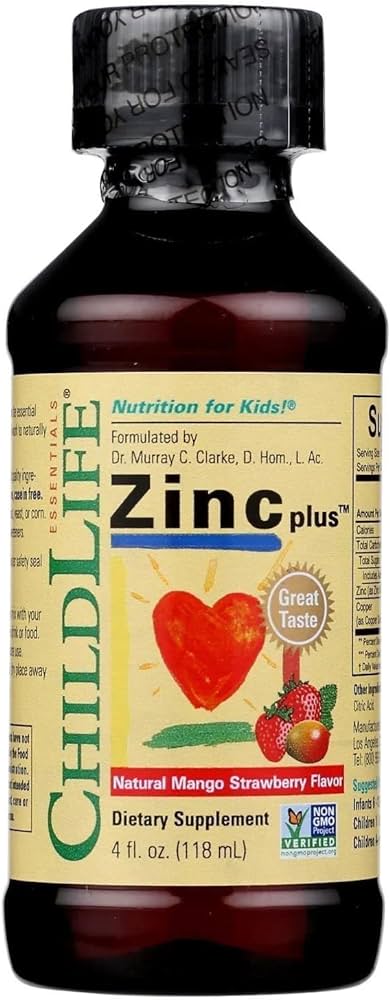
Allergen-Free Milk Alternatives
Options like almond milk, coconut milk and oat milk are excellent substitutes for dairy milk and are often free of common allergens.
These dairy milk alternatives, such as almond milk, coconut milk and oat milk, have gained popularity not only for their versatility but also for their numerous benefits that extend far beyond being allergen-free.
1. Lactose-Free: One of the primary reasons people turn to these milk alternatives is because they are naturally lactose-free. This makes them a perfect choice for individuals who are lactose intolerant or have dairy allergies, allowing them to enjoy milk-like beverages without digestive discomfort.
2. Nutrient Enrichment: Many brands fortify these milk alternatives with essential nutrients like calcium, vitamin D and vitamin B12 to match or even surpass the nutritional content of dairy milk. This is particularly important for those on plant-based diets, as it ensures they still receive vital nutrients for bone health and overall well-being.
3. Low in Saturated Fat: Almond milk, coconut milk and oat milk are generally lower in saturated fats compared to whole dairy milk. This can be beneficial for heart health, as reducing saturated fat intake is often recommended to lower the risk of cardiovascular issues.
4. Vegan-Friendly: For vegans, these milk alternatives are a staple. They provide a creamy and satisfying base for recipes, such as smoothies, soups and baked goods, without the need for animal-derived products. This aligns with ethical and environmental concerns while offering a cruelty-free option.
5. Culinary Versatility: Beyond being a beverage, these milk alternatives can be used in various culinary applications. Almond milk and oat milk can make creamy lattes and cappuccinos, while coconut milk is excellent for adding richness to curries and desserts. Their versatility extends to both sweet and savory dishes, making them a go-to choice for home cooks and professional chefs alike.
6. Potential Health Benefits: Some studies suggest that certain components in these milk alternatives, such as almond milk’s monounsaturated fats or oat milk’s beta-glucans, may offer specific health benefits, such as supporting heart health and regulating blood sugar levels.
7. Environmentally Conscious: Plant-based milk alternatives often have a lower environmental footprint compared to traditional dairy milk, contributing to sustainability efforts and reduced greenhouse gas emissions.
8. Dietary Diversity: Incorporating these milk alternatives into your diet adds variety and opens up new flavor profiles, making your meals more exciting and enjoyable. Experimenting with different options can help break dietary monotony.
In essence, almond milk, coconut milk and oat milk aren’t just substitutes for dairy milk; they are versatile and nutrient-enriched choices that cater to a range of dietary preferences and requirements. Whether you’re seeking a lactose-free option, following a vegan lifestyle or simply looking to diversify your diet, these milk alternatives offer a wealth of culinary and nutritional benefits.
To expand your knowledge on this subject, make sure to read on at this location: 89 Allergy-Friendly Baking Products – Spokin

Nut Butter Alternatives
For those with nut allergies, sunflower seed butter and soy butter are tasty alternatives to traditional nut butters.
In the realm of dietary preferences and considerations, accommodating food allergies is paramount, especially when it comes to enjoying the beloved indulgence of nut butters. Fortunately, for individuals with nut allergies, there exist delectable alternatives that not only cater to their dietary needs but also offer a delightful twist on the classic nut butter experience. Enter sunflower seed butter and soy butter, two delectable options that are sure to satisfy your nut butter cravings while keeping allergies at bay:
Sunflower Seed Butter: The Nutty Sunshine Spread: Sunflower seed butter, often referred to as “sunbutter,” is a shining star in the world of nut butter alternatives. Crafted from roasted sunflower seeds, this creamy spread offers a rich and slightly nutty flavor profile reminiscent of traditional nut butters. It boasts a satisfying texture that’s perfect for spreading on toast, swirling into oatmeal or incorporating into baked goods like cookies and brownies. Sunflower seed butter is not only delicious but also a stellar source of essential nutrients like vitamin E, magnesium and selenium. It provides a nut-free option that can be enjoyed with peace of mind, even by those with nut allergies.
Soy Butter: The Creamy and Versatile Choice: Soy butter is another delectable alternative that deserves a place in the pantry of those with nut allergies. Made from roasted soybeans, this creamy spread offers a mild and neutral flavor, making it a versatile addition to a wide range of culinary creations. Its smooth consistency makes it a suitable choice for spreading on sandwiches, drizzling on pancakes or using as a dip for fresh fruit and vegetables. Soy butter is also packed with plant-based protein, fiber and essential minerals, making it a wholesome choice for those seeking a nutrient-rich alternative to traditional nut butters.
Allergy-Friendly Benefits: Both sunflower seed butter and soy butter are allergy-friendly options that can be enjoyed by individuals with nut allergies, as well as those with other common food allergies. They provide a tasty solution for households and communities seeking to accommodate various dietary needs without compromising on flavor or nutrition.
Nutrition and Versatility: Beyond their allergy-friendly nature, these butter alternatives bring their unique nutritional advantages to the table. Sunflower seed butter offers a dose of heart-healthy monounsaturated fats, while soy butter is celebrated for its plant-based protein content. Their versatility extends to both sweet and savory dishes, allowing you to explore an array of culinary possibilities while keeping allergies in check.
In conclusion, sunflower seed butter and soy butter are indeed delectable alternatives to traditional nut butters, offering a delectable nut-free experience for those with allergies or dietary preferences. Their rich flavors, creamy textures and nutritional benefits make them not only allergy-friendly but also a welcome addition to any kitchen. Whether you’re spreading them on a morning slice of bread or using them as ingredients in your favorite recipes, these nut butter alternatives invite you to savor their distinctive flavors and embrace their nutrient-rich profiles while navigating the nuances of dietary choices and food allergies.
Explore this link for a more extensive examination of the topic: News | Tiger Nuts USA
Egg Replacements
Vegan egg substitutes like flaxseed meal, chia seeds or commercial egg replacers are suitable for baking and binding in recipes.
Vegan cooking and baking have evolved by leaps and bounds, thanks to innovative egg substitutes that allow you to create delectable dishes without relying on traditional eggs. Whether you’re following a vegan diet, have egg allergies or simply want to reduce your environmental footprint, these egg replacements open up a world of culinary possibilities.
Flaxseed meal, often referred to as ground flaxseeds, is a superstar in the realm of vegan egg substitutes. When mixed with water, it transforms into a gel-like consistency that mimics the binding and moisture-retaining properties of eggs. This makes it an excellent choice for baking everything from muffins and cookies to pancakes and bread. Beyond its binding abilities, flaxseed meal also brings a dose of healthy omega-3 fatty acids and dietary fiber to your recipes.
Chia seeds are another versatile egg replacement option. Similar to flaxseeds, chia seeds form a gel when combined with water. This gel not only binds ingredients together but also adds a unique texture to your baked goods. Chia seeds are rich in omega-3s, antioxidants and fiber, making them a nutritious addition to your recipes. They are particularly well-suited for creating moist and tender baked goods, such as cakes and brownies.
For added convenience, commercial egg replacers are readily available in most grocery stores. These powdered or liquid substitutes are specially formulated to mimic the binding and leavening properties of eggs in recipes. They are often a combination of starches, leavening agents and gums, ensuring consistent results in your culinary creations. Many commercial egg replacers are allergy-friendly and suitable for various dietary preferences.
When using vegan egg substitutes, it’s important to keep in mind that the flavor and texture of your final dish may vary slightly from traditional recipes. However, with experimentation and adjustments, you’ll find that these substitutes offer a world of possibilities in the kitchen. Whether you’re whipping up a batch of vegan chocolate chip cookies or preparing a fluffy plant-based omelet, these egg replacements not only accommodate your dietary choices but also contribute to more compassionate and sustainable cooking. So, don’t hesitate to explore the boundless creativity of vegan baking and cooking, with these egg substitutes as your trusty allies in the kitchen.
For a comprehensive look at this subject, we invite you to read more on this dedicated page: Mines Market

Soy-Free Protein Sources
For individuals avoiding soy, explore alternative protein sources like pea protein, hemp protein or rice protein.
For individuals who prefer to steer clear of soy or have dietary restrictions that limit their soy intake, there’s a world of alternative protein sources waiting to be discovered. Diversifying your protein choices not only adds excitement to your meals but also ensures you get a well-rounded array of nutrients. Here are some fantastic alternatives to soy protein:
Pea Protein: Derived from yellow peas, pea protein is a versatile plant-based protein source. It’s rich in essential amino acids, particularly branched-chain amino acids (BCAAs), which are vital for muscle growth and repair. Pea protein is also highly digestible and hypoallergenic, making it an excellent option for those with food sensitivities.
Hemp Protein: Hemp seeds are a nutritional powerhouse and hemp protein is no exception. It’s a complete protein, meaning it contains all nine essential amino acids that the body cannot produce on its own. Additionally, hemp protein is a great source of fiber, healthy fats (omega-3 and omega-6 fatty acids) and various vitamins and minerals.
Rice Protein: Rice protein is made from brown rice and is often hypoallergenic and easily digestible. While it may not be as rich in certain amino acids as other plant-based proteins, it can still be a valuable part of a well-balanced diet. It’s a great option for those looking to avoid common allergens.
Quinoa: Although quinoa is primarily known as a grain, it’s also an excellent source of protein. Quinoa contains all nine essential amino acids, making it a complete protein. It’s incredibly versatile and can be used in salads, bowls and as a side dish.
Lentils: Lentils are a protein powerhouse, packing around 9 grams of protein per half-cup serving when cooked. They are also rich in dietary fiber, iron and various vitamins and minerals. Lentils can be used in soups, stews, salads and as a meat substitute in various dishes.
Chickpeas: Chickpeas, commonly used in dishes like hummus and falafel, are another excellent plant-based protein source. They are not only protein-rich but also high in fiber, vitamins and minerals.
Nut and Seed Butters: Nut and seed butters like almond butter, peanut butter and sunflower seed butter are not only delicious but also provide a good dose of protein. They can be used as spreads, added to smoothies or used as a dip for fruits and veggies.
Tofu (for non-soy alternatives): For those looking for non-soy tofu options, consider exploring tofu made from other ingredients like chickpeas or almond-based tofu. These alternatives offer a similar texture and can be used in a variety of savory and sweet dishes.
By incorporating these alternative protein sources into your diet, you not only meet your protein needs but also enjoy a broader spectrum of nutrients and flavors. Whether you’re following a vegetarian or vegan lifestyle or simply looking to diversify your protein intake, these options can add both nutrition and excitement to your meals.
Looking for more insights? You’ll find them right here in our extended coverage: ORGANIC’LY FOODS Organic Pizza Dough & Flat … – Amazon.com

Allergen-Friendly Snacks
Brands now offer a wide variety of snacks free from common allergens, such as nut-free granola bars and soy-free protein bars.
Brands now offer a wide variety of snacks free from common allergens, such as nut-free granola bars and soy-free protein bars. This expansion of allergen-free snack options represents a significant stride toward inclusivity in the food industry and is driven by several important factors:
Food Allergies Awareness: As awareness of food allergies grows, more consumers are seeking allergen-free options. This shift in consumer demand has encouraged food manufacturers to invest in developing safe and delicious products that cater to those with specific dietary restrictions.
Inclusivity: Providing allergen-free snacks is not only about accommodating individuals with allergies but also about promoting inclusivity. It ensures that everyone, regardless of their dietary needs or restrictions, can enjoy a wide range of tasty and convenient snack choices.
Health Consciousness: Many consumers are becoming more health-conscious and are paying closer attention to the ingredients in their food. Allergen-free snacks often align with these preferences by offering clean and simple ingredient lists, which can be appealing to a broader audience.
Customization: The availability of allergen-free snacks allows consumers to customize their diets to match their specific health goals and needs. Whether someone is avoiding certain allergens by necessity or choice, these products provide flexibility and convenience.
Nutrient Diversity: Allergen-free snacks often rely on a variety of alternative ingredients, such as seeds, gluten-free grains and legumes, to replace common allergenic components like nuts and soy. This diversification of ingredients can contribute to a more balanced and nutrient-rich diet.
Innovation and Flavor: The development of allergen-free snacks has spurred culinary creativity. Manufacturers are continually experimenting with new ingredients and flavor combinations to deliver unique and satisfying taste experiences, challenging the notion that allergen-free means flavorless.
Label Transparency: Food brands are increasingly prioritizing label transparency, making it easier for consumers to identify allergen-free products at a glance. Clear and accurate labeling builds trust and confidence in these products.
Safe Snacking for Children: Allergen-free snacks are especially important for children with food allergies. Parents can now find a wider selection of safe and nutritious snacks to include in their children’s lunches or for on-the-go.
Global Accessibility: The availability of allergen-free snacks is not limited to specific regions or markets. Many of these products are distributed internationally, ensuring that individuals worldwide have access to safe and enjoyable snacks.
In summary, the growth of allergen-free snacks reflects a positive shift in the food industry towards inclusivity and catering to diverse dietary needs. These snacks offer a valuable option for individuals with allergies or dietary restrictions, while also appealing to those who prioritize clean and healthy eating. As innovation in the food industry continues, we can anticipate even more delicious and allergen-free snack choices in the future, enhancing the snacking experience for everyone.
To delve further into this matter, we encourage you to check out the additional resources provided here: Nutrition & Dietary Accommodations
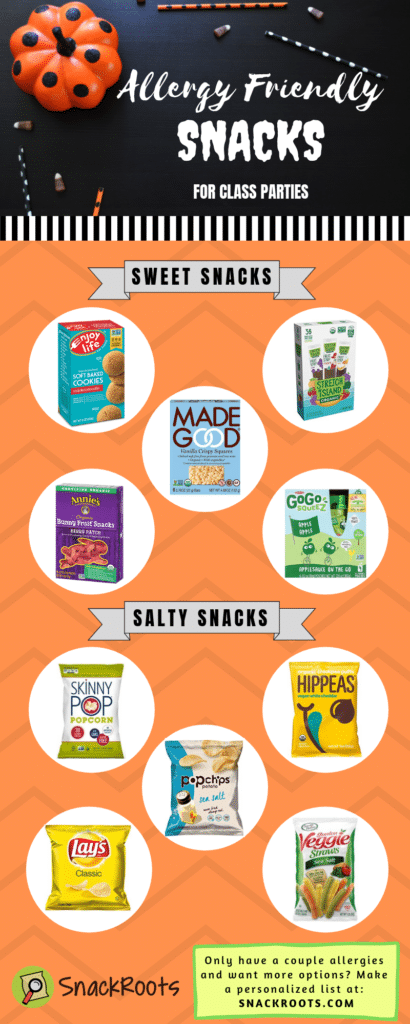
Navigating the World of Allergen-Friendly and Gluten-Free Foods
When adopting an allergen-friendly or gluten-free lifestyle, it’s crucial to read food labels carefully, as allergen information and gluten-free certifications are essential for ensuring safety. Many food manufacturers now provide clear labeling to make shopping easier for those with dietary restrictions.
Moreover, it’s important to seek out naturally allergen-friendly and gluten-free foods, such as fruits, vegetables, lean proteins and unprocessed grains. These whole foods form the foundation of a nutritious and balanced diet, regardless of dietary restrictions.
Embracing an allergen-friendly or gluten-free lifestyle not only requires vigilance when reading food labels but also presents an opportunity to explore a world of wholesome and delicious options. Here’s an extended perspective on making the most of this dietary journey:
Dive into Label Literacy: Reading food labels becomes an essential skill when you’re pursuing an allergen-friendly or gluten-free lifestyle. Scan the ingredient list for common allergens like peanuts, tree nuts, dairy, soy and gluten-containing grains such as wheat, barley and rye. Additionally, watch out for hidden sources of these allergens, as they might appear under alternative names or as part of complex ingredients.
Trust in Certifications: Many individuals rely on allergen-specific certifications like “gluten-free,” “dairy-free,” or “nut-free” to identify safe products quickly. These certifications go through rigorous testing processes, providing an extra layer of assurance. Remember that these labels are not only for those with dietary restrictions but also for anyone seeking transparency about what’s in their food.
Explore the Growing Market: Fortunately, the demand for allergen-friendly and gluten-free products has led to an expansion in available options. You can now find a wide array of snacks, baking mixes and prepared meals designed specifically for your dietary needs. This diversity allows you to enjoy your favorite foods without compromising your health.
Cooking Creatively: While packaged options are convenient, home cooking empowers you to create dishes tailored to your preferences and dietary requirements. Explore alternative flours like almond, coconut or cassava for gluten-free baking. Experiment with dairy-free milk, like almond, oat or soy, in your recipes. Cooking at home lets you control the ingredients, ensuring that your meals align perfectly with your dietary restrictions.
Embrace Whole Foods: The foundation of any healthy diet, whether you have dietary restrictions or not, should always be whole foods. Fruits, vegetables, lean proteins and unprocessed grains are naturally allergen-friendly and gluten-free. These foods are packed with essential nutrients, fiber and antioxidants that support overall well-being. Incorporate a variety of colorful fruits and vegetables into your meals to maximize your nutritional intake.
Discover Ethnic Cuisine: Exploring different cuisines can open up a world of allergen-friendly and gluten-free options. For instance, Asian, Middle Eastern and Mexican cuisines often feature dishes centered around rice, corn or gluten-free grains like quinoa. Spices and herbs can add rich flavor without the need for allergenic ingredients.
Plan Ahead: Maintaining an allergen-friendly or gluten-free lifestyle requires some planning, especially when dining out or traveling. Research restaurants that offer allergen-friendly menus or call ahead to inquire about suitable options. When traveling, pack snacks or easy-to-prepare meals to ensure you have safe and satisfying options on hand.
In conclusion, adopting an allergen-friendly or gluten-free lifestyle need not be a daunting task. With label literacy, a diverse market of specialized products and a focus on whole foods, you can not only navigate your dietary restrictions but also discover a world of culinary possibilities that enhance your health and well-being. Remember, your dietary choices can be both delicious and nourishing.
To delve further into this matter, we encourage you to check out the additional resources provided here: ORGANIC’LY FOODS Organic Pizza Dough & Flat … – Amazon.com

In conclusion, living with dietary restrictions no longer means compromising on flavor or variety. The market now offers a plethora of gluten-free and allergen-friendly essentials that cater to diverse tastes and preferences. By exploring these options and embracing a diet rich in naturally allergen-friendly and gluten-free foods, individuals with dietary restrictions can enjoy delicious, nutritious and safe meals that support their health and well-being.
In summary, the landscape of dietary choices has transformed significantly and individuals with dietary restrictions need not sacrifice flavor or variety in their meals. The modern market is a treasure trove of gluten-free and allergen-friendly essentials, designed to accommodate a wide range of tastes and preferences. By delving into these offerings and adopting a diet that focuses on naturally allergen-friendly and gluten-free foods, those with dietary restrictions can embark on a culinary journey filled with delectable, nutrient-packed and safe meals that not only cater to their specific needs but also enhance their overall health and well-being.
Culinary Adventure: Embracing dietary restrictions can be an exciting culinary adventure. Exploring alternative ingredients and innovative recipes can introduce you to a world of flavors and textures you may not have experienced otherwise. It’s an opportunity to broaden your palate and discover new favorite dishes.
Nutritional Enrichment: A well-planned gluten-free or allergen-friendly diet can offer surprising nutritional benefits. It often encourages a focus on whole, unprocessed foods such as fruits, vegetables, lean proteins and whole grains. This emphasis on nutrient-dense choices can lead to improved overall health and vitality.
Creative Cooking: Navigating dietary restrictions can spark your creativity in the kitchen. Experimenting with different ingredients and cooking techniques can lead to the development of unique and delicious dishes that cater to your specific needs while impressing family and friends.
Supportive Community: In today’s interconnected world, you’re not alone in your dietary journey. A thriving community of individuals with similar dietary restrictions, along with supportive online resources and forums, can offer guidance, share recipes and provide a sense of belonging. Connecting with others facing similar challenges can be both comforting and empowering.
Health and Well-Being: By embracing allergen-friendly and gluten-free options, you’re making choices that support your health and well-being. A diet tailored to your needs can help alleviate symptoms, enhance digestion and boost overall vitality, ensuring you’re not just eating for taste but also for your long-term health.
In conclusion, living with dietary restrictions is no longer a compromise but an opportunity for culinary exploration, nutritional enrichment and creative cooking. With a wealth of allergen-friendly and gluten-free options at your fingertips, you can savor a diverse and satisfying array of meals that not only meet your dietary requirements but also tantalize your taste buds. So, embrace your dietary journey with enthusiasm and relish the delicious, nutritious and safe meals that await you on this unique and rewarding path.
To delve further into this matter, we encourage you to check out the additional resources provided here: Mines Market
More links
For additional details, consider exploring the related content available here Nutrition & Allergen Information | Yard House Restaurant
